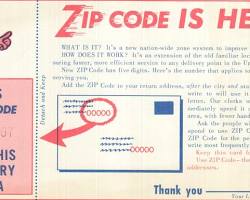What is SMS code 128? If you’re a T-Mobile customer, you’ve likely encountered this mysterious shortcode in your text messages. In essence, SMS code 128 is T-Mobile’s designated number for sending various types of messages to its customers. It’s a central hub for account notifications, offers, updates, and even some customer support interactions.
Contents
The Purpose of SMS Code 128
Shortcodes like 128 are designed to be easily recognizable and memorable. They offer a streamlined way for companies to communicate directly with their customers via text message. T-Mobile utilizes this code for several key functions:
- Account Notifications: These texts can inform you about billing cycles, payment due dates, data usage warnings, and other account-related updates.
- Promotional Offers: T-Mobile may send exclusive deals, discounts, or information about new products and services using this shortcode.
- Service Updates: Messages might alert you to network outages, maintenance activities, or upgrades that could affect your service.
- Customer Support: In some instances, T-Mobile might initiate two-way communication via code 128 to answer questions, troubleshoot issues, or provide assistance.
Is SMS Code 128 Legitimate?
Yes, SMS code 128 is a legitimate communication channel used by T-Mobile. You can trust that messages from this shortcode are official and originate directly from the carrier. However, always be cautious and avoid clicking on suspicious links or providing sensitive information unless you’re certain of the message’s authenticity.
How to Interact with SMS Code 128
Depending on the type of message you receive, you might have various options for interacting with code 128:
- Reply with Keywords: Many T-Mobile texts from code 128 prompt you to reply with specific keywords (e.g., “BALANCE,” “HELP,” “STOP”) to access information or manage your preferences.
- Call Customer Service: If you have concerns about a message or need further assistance, don’t hesitate to contact T-Mobile’s customer service directly.
- Manage Preferences: T-Mobile typically provides ways to manage your messaging preferences. You might be able to opt-out of certain types of messages or adjust how often you receive them.
The Benefits of SMS Code 128

While some users might find text messages from shortcodes to be disruptive, code 128 does offer several advantages:
- Convenience: It’s a quick and easy way to stay informed about your T-Mobile account and services.
- Direct Communication: It allows for direct interaction with T-Mobile without needing to call customer service or log into an online account.
- Timely Updates: You can receive critical alerts and notifications promptly, ensuring you’re aware of any potential service disruptions or account issues.
Concerns and Considerations
Although SMS code 128 is a legitimate tool, it’s important to be mindful of a few potential concerns:
- Spam: While rare, there have been instances of scammers attempting to spoof shortcodes like 128. Always verify the authenticity of messages before taking any action.
- Data Charges: If you have a limited texting plan, receiving messages from code 128 might contribute to your data usage. Be aware of your plan limits to avoid unexpected charges.
- Privacy: T-Mobile’s privacy policy outlines how they handle your data. Review it to understand how your information is used when interacting with code 128.
In Conclusion: What is SMS Code 128?
What is SMS code 128? It’s a vital communication tool that T-Mobile employs to keep you informed, engaged, and in control of your account. While it’s important to exercise caution and manage your preferences, this shortcode plays a significant role in the modern customer experience.
By understanding the purpose and functionality of SMS code 128, you can make the most of this convenient channel and ensure a seamless experience with your T-Mobile services.




